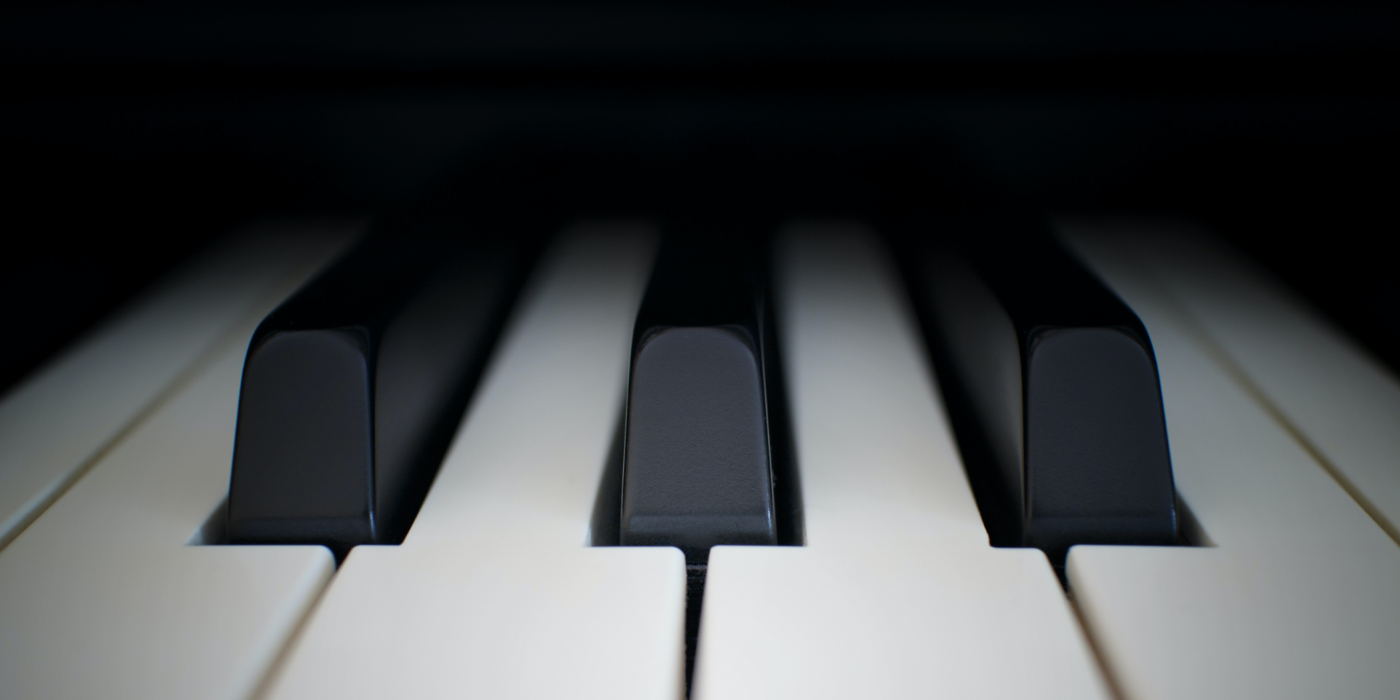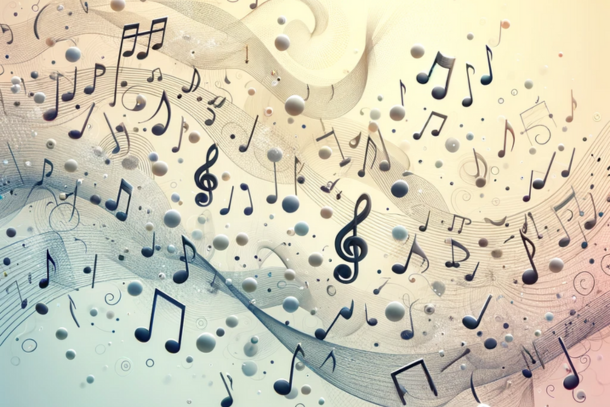Piano Keys Labelled: A Comprehensive Guide to Understanding Piano Keys Labelled with Notes

This article aims to provide an in-depth look into the world of piano key labelling, specifically focusing on how keys are labelled with musical notes. Whether you're a beginner venturing into the realm of piano playing or a seasoned pianist seeking to refresh your understanding, this guide will serve as a comprehensive resource.
A Glimpse into the History and Importance of Piano Labelling
The practice of labelling piano keys dates back to the early days of piano instruction. As a visual aid, it helps beginners familiarise themselves with the piano keyboard layout, which consists of 88 keys in a standard set, with the cycle of natural notes (A to G) and accidentals (sharps and flats) repeating across the keyboard. Learning to recognise these notes on the keys is a fundamental step in one's musical journey.
The Origin of Piano Key Labelling
Piano labelling originated as a teaching tool to accelerate the learning process, making the instrument more accessible to people of all ages and abilities. By visually marking the corresponding notes onto the keys, learners could more easily associate the keys with the notes, paving the way for more advanced music reading skills.
Benefits of Understanding Piano Keys and Their Corresponding Notes
Understanding piano keys and their corresponding notes opens the door to a world of musical possibilities. It equips learners with the ability to sight-read sheet music, transpose music to different keys, improvise on the fly, and much more. Ultimately, understanding the piano keys labelled with notes allows individuals to fully harness the piano's expressive capabilities, laying a solid foundation for their musical journey.
Understanding the Basics of a Piano Keyboard
Detailed Description of a Standard Piano Keyboard
A standard piano keyboard contains 88 keys, a pattern of 12 keys (seven white and five black) repeated across seven octaves plus a minor third. This rich array serves to span the complete spectrum of sounds audible to the human ear.
Key Layout and Structure
On the piano, each octave consists of seven natural notes (white keys) labelled from A to G and five accidental notes (black keys), either sharps (#) or flats (♭). The black keys are grouped in a pattern of twos and threes, with the pattern repeating after every seventh white key.
Differentiating Between White Keys and Black Keys
The white keys represent the major notes (A, B, C, D, E, F, and G), while the black keys represent the sharps and flats. Each black key can be either a sharp (+) of the white key on its left or a flat (-) of the white key on its right. For instance, the black key to the right of a C key is either C# (C sharp) or D♭ (D flat).
Importance of the Middle C as a Reference Point
Middle C is the reference point on the keyboard and serves as a crucial landmark for both reading music and understanding keyboard layout. On a standard 88-key piano, Middle C is the fourth C from the left of the keyboard and sits virtually in the middle, making it an easy reference point for learners to orient themselves. Middle C also roughly represents the mid-range of human hearing. Knowing its position is the starting point for understanding piano keys labelled with notes.
The Importance of Piano Keys Labelled
Enhancing Learning with Labelled Piano Keys
Understanding the basic structure and layout of a piano keyboard is the first step in learning to play. The black and white keys can seem overwhelming at first, and this is where piano key labels come in handy. By labelling each key with its corresponding note, we create a visual guide that can greatly enhance the learning process. Beginners can quickly and accurately identify notes, building a solid foundation from which they can advance their skills.
The Role of Key Labels in Sight-Reading and Playing by Ear
For students of music, sight-reading and playing by ear are essential skills.
Sight-Reading
This involves reading sheet music and translating it into sound without prior practice. It's a bit like learning to read a book – you see the words (notes) and understand what they mean. Having labelled keys is a practical tool that can simplify the translation process, especially in the early stages of learning.
Playing by Ear
Similarly, when playing by ear, recognising the corresponding note for each key allows you to replicate the sounds you hear more accurately. Even though this technique mostly relies on auditory skills, a labelled keyboard can act as a useful guide when attempting to find the correct notes.
Speeding Up the Learning Process with Labelled Keys
Lastly, labelling piano keys can dramatically speed up the learning process. Instead of spending time figuring out which key corresponds to which note, students can focus on the essentials: rhythm, technique, and interpretation. Remember, though, while labels are excellent learning aids, the ultimate goal is to memorise the keys and their notes, fostering a more instinctual and profound connection with the piano.
IV. The Structure of Musical Notes and Their Corresponding Piano Keys A. Detailed explanation of the musical alphabet (A to G) B. Describing the relationship between notes and keys C. Defining sharps and flats and their corresponding black keys
V. A Step-by-Step Guide to Label Piano Keys with Notes A. A beginner-friendly guide to label piano keys B. Explanation of materials needed for labelling C. Tips and tricks for easy and effective labelling
VI. The Benefits and Drawbacks of Piano Key Labelling A. Highlighting the advantages of piano keys labelled with notes B. Discussing potential drawbacks and misconceptions C. Importance of eventually moving away from labelled keys
The Structure of Musical Notes and Their Corresponding Piano Keys
Understanding the Musical Alphabet (A to G)
The foundation of music rests upon the musical alphabet, a seven-letter series from A to G. Each of these letters represents a different note, which in turn corresponds to a key on the piano. This pattern repeats across the piano keyboard. Starting with the note 'A', the sequence progresses linearly: A, B, C, D, E, F, G, then back to A again, continuing in a cyclical fashion.
The Musical Alphabet on the Piano
It is important to remember that the pattern starts anew after G, with the next white key being A. Thus, each octave consists of seven white keys corresponding to these seven notes.
Notes and Keys: A Harmonious Relationship
The piano's unique layout is designed to visually represent the musical alphabet. Each white key represents a natural note from A to G, while black keys represent sharps or flats. Every note on the piano has a unique pitch, and that pitch is determined by the key's position on the keyboard.
A Key to a Note
Simply put, each piano key, whether black or white, represents a musical note. When a key is struck, it produces the sound of the corresponding note. This relationship between keys and notes is fundamental to understanding and playing music on the piano.
Sharps, Flats, and the Black Keys
Sharps and flats are crucial elements in the musical landscape. In essence, a sharp (#) raises a note by a half-step, while a flat (♭) lowers it by the same amount. On a piano, black keys represent these sharps and flats.
Navigating the Black Keys
To find a sharp, look for the black key directly to the right of a white key. Conversely, a flat is the black key directly to the left. For example, the black key to the right of A is A#, and the one to the left is Ab. This knowledge is vital when reading sheet music and translating it to the piano keys.
A Step-by-Step Guide to Label Piano Keys with Notes
A Beginner-Friendly Guide to Label Piano Keys
Understanding the layout of a piano and learning the keys can seem daunting for beginners, but the process can be simplified by labelling the keys.
-
Start with Middle C: This is the starting point for most beginners. Middle C is typically located near the centre of the keyboard. It's the white key immediately to the left of the group of two black keys.
-
Identify the musical alphabet: After locating Middle C, move to the right on the keyboard to identify D, E, F, G. After G, the musical alphabet starts again at A.
-
Recognise the pattern: Observe the black keys. They appear in a pattern of two and three. Every white key before a set of two black keys is a C. You can now identify any 'C' on the keyboard.
Explanation of Materials Needed for Labelling
To label your piano keys, you'll need some removable stickers and a marker. Make sure the stickers are thin enough to fit on the keys without obstructing playability, and ensure the marker ink does not smudge or fade easily.
Tips and Tricks for Easy and Effective Labelling
-
Avoid Overcrowding: Label only the C key and then identify the rest of the keys from there. This prevents the keys from looking crowded and allows learners to quickly identify other notes based on their relation to C.
-
Upgrade Gradually: As you become comfortable, gradually remove the labels and rely more on memory and finger placement.
-
Use A Piano Layout Diagram: This can provide a helpful visual reference and guide for labelling your piano keys correctly.
Remember, the main purpose of labelling is to aid in the initial stages of learning. As you progress, try to rely less on the labels and more on your memory and understanding of the keyboard layout.
The Benefits and Drawbacks of Piano Key Labelling
Advantages of Piano Keys Labelled with Notes
Understanding piano keys and their corresponding notes is a foundational aspect of learning to play this instrument. Labelled keys offer several benefits:
Accelerated Learning
For beginners, having piano keys labelled can drastically shorten the learning curve. This visual aid can help learners to quickly familiarise themselves with the keyboard layout and the association between keys and notes.
Enhanced Music Theory Comprehension
Labelled keys can also enhance one's understanding of music theory, enabling learners to recognise patterns and chord structures more intuitively.
Potential Drawbacks and Misconceptions
While labelled keys offer a plethora of advantages, there are potential drawbacks and misconceptions to consider:
Over-Reliance
One potential pitfall is becoming overly reliant on the labels. This could potentially limit a learner's ability to play on other keyboards that aren't labelled, hindering their flexibility as a pianist.
Impedes Sight-Reading Skills Development
Relying heavily on labelled keys can also impede the development of sight-reading skills, an essential aspect of piano mastery that involves reading and playing music notation.
Importance of Graduating from Labelled Keys
Despite the potential drawbacks, labelled keys serve as a fantastic initial stepping stone in piano learning. The end goal, however, should be to wean oneself off of them over time. This progression promotes better mastery and allows players to comfortably use any piano, labelled or not. Ultimately, the goal of any pianist should be to reach a level of proficiency where they no longer require labels to confidently navigate the keyboard.
Digital Solutions for Piano Key Labelling
In the age of digital learning, technology has simplified the process of learning instruments, including the piano. This section explores various digital platforms and resources that facilitate piano learning through labelled keys.
Introduction to Various Piano Learning Apps
To begin with, there is a plethora of piano learning apps available in the digital marketplace. Some popular choices include Simply Piano, Flowkey, and Piano Maestro. These apps offer a rich interactive experience for learners of all levels. They feature step-by-step courses, instant feedback, and some even have AR (Augmented Reality) technology to superimpose the piano keys' labels on your keyboard.
Features of Digital Pianos with Labelled Keys
In addition to these apps, there are also digital pianos that come pre-labelled or with an option to label the keys. This feature helps beginners identify the notes and their placement on the keyboard easily. One standout model is the Casio LK-S250 with its Key Lighting System. The keys light up to show the learner where to press next, making the learning experience engaging and effective.
Pros and Cons of Digital Solutions
While digital solutions undoubtedly offer convenience and immediate feedback, they have their drawbacks. On the positive side, they provide accessibility, easy tracking of progress, and interactive learning experiences. However, the cons include possible over-reliance on visual cues, which can hamper the development of aural skills, and the need for an electronic device to access these resources. Nevertheless, the advantages of digital solutions far outweigh their downsides, making them a valuable asset in your piano learning journey.
Conclusion
The Value of Labelled Piano Keys
The journey of exploring the language of music through piano can initially seem daunting. However, with the aid of labelled piano keys, it becomes much more manageable. Labelled keys serve as a pivotal learning tool, transforming a seemingly complex 88-key landscape into a familiar terrain. The notes, now with names, no longer remain abstract entities but become touchpoints for melody and harmony.
By understanding the layout of piano keys and their corresponding notes, we lay the groundwork for a much more in-depth comprehension of music theory. Indeed, the relationship between keys and notes is at the heart of mastering this beautiful instrument.
The Beginning of a Musical Journey
If you are a beginner in the world of piano, do not shy away from using this efficient tool. Labelled keys offer a guiding light, leading you through initial uncertainties and fostering a solid foundation. They enable you to focus on the more critical aspects of playing, like rhythm and expression, while the note-names become second nature.
Moreover, digital advancements have also made it possible to utilise labelled keys in online learning platforms. These resources have opened up new avenues for aspiring pianists to learn and practice conveniently.
Embracing the Process of Learning
Finally, it's essential to remember that learning to play the piano is a journey. Like any new skill, it takes time, practice, and patience. The labelling of keys is just one step towards understanding the complexities of the piano. But with every note played and every melody created, you'll find yourself gradually connecting with the music.
Each individual's journey will be unique, but the common thread is the joy of creating music and the personal growth that comes along with it. So, keep practising, stay curious, and most importantly, enjoy the journey.
I do hope you have enjoyed this article and hope that you will subscribe to my newsletter so you can get the latest information about all things naturally relaxing.
Stay in touch, join the Naturally Relaxing Newsletter
Newsletter Signup
Post Your Comments
or post as a guest
Be the first to comment.
Latest articles in Music

Serene Symphony: Exploring 10 Timeless Classical Pieces for Unwavering Tranquillity

The Best Music for Meditation: A British Expert's Guide to Deepening Your Practice

The Best Music for Studying: An Expert's Guide to Optimal Concentration & Memory Boost

Melody & Dreams: The Musical Route to a Restful Night

The Healing Power of Music: Combatting Stress & Anxiety in Modern Britain






